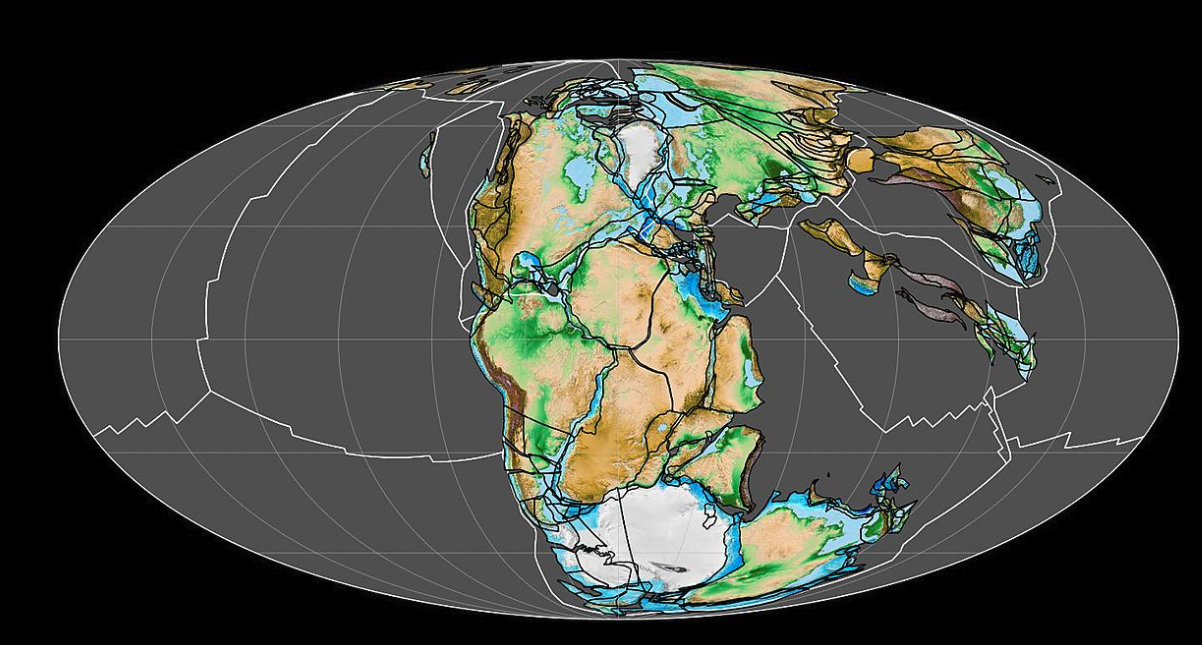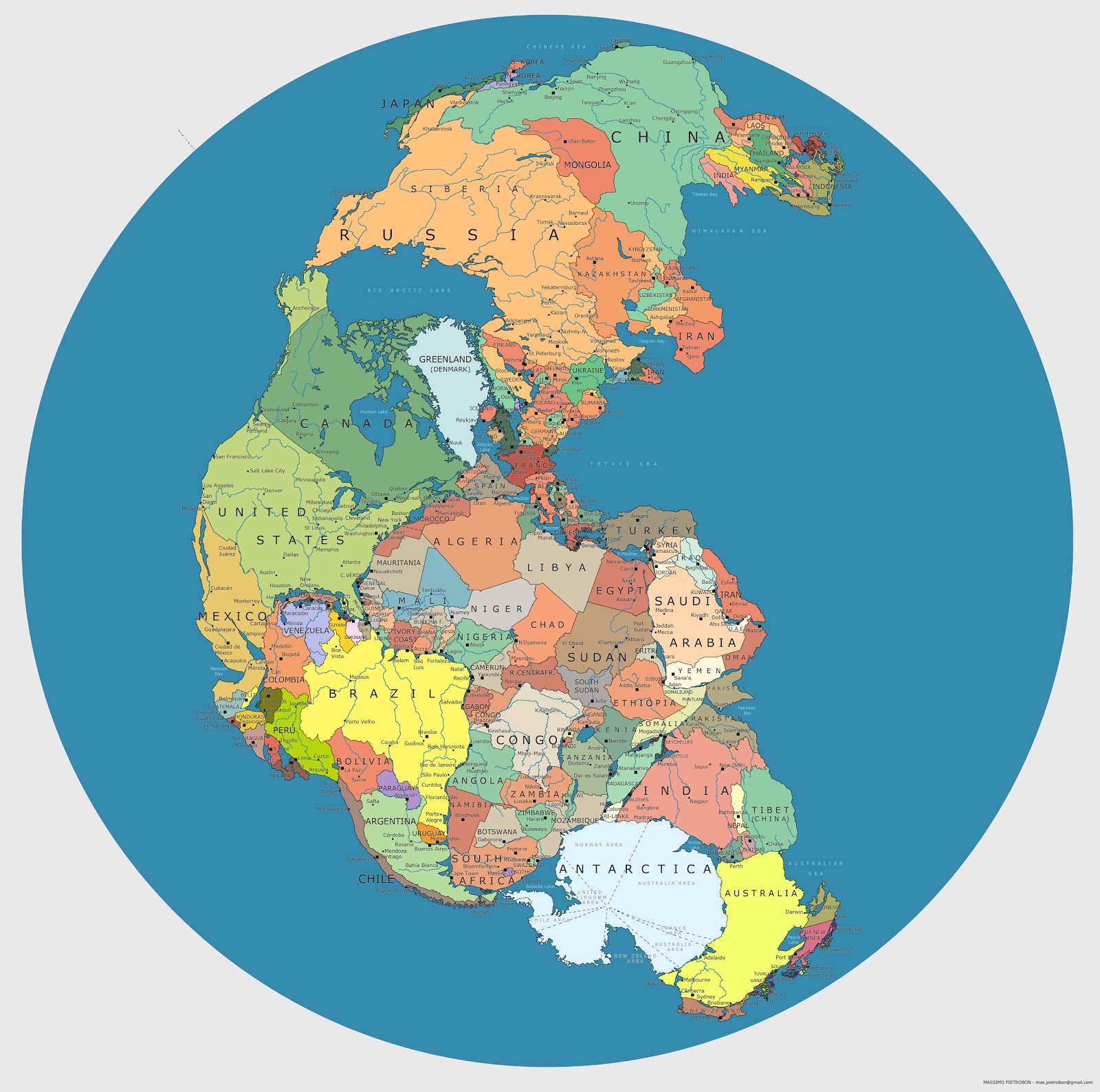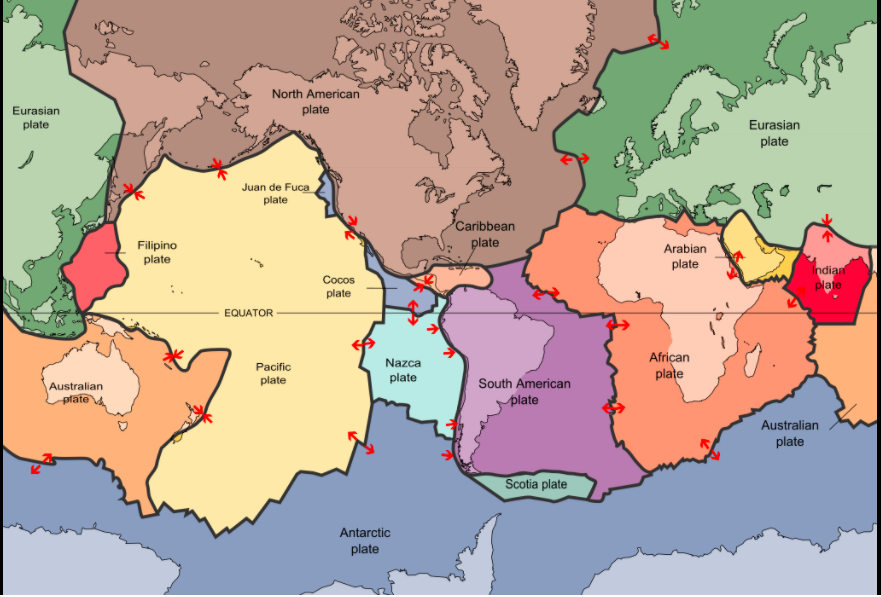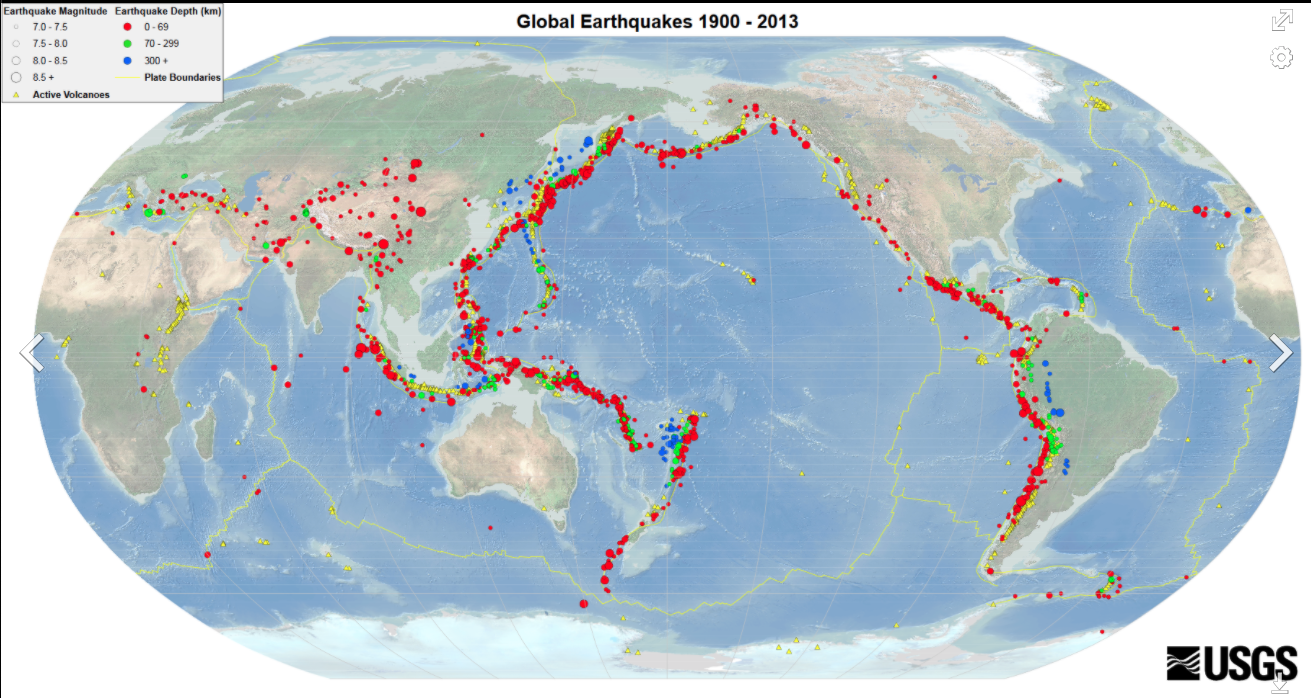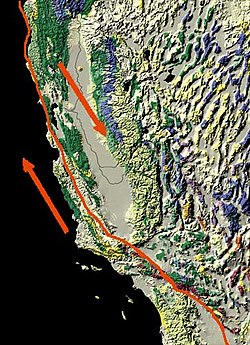Study Guide: Change and Plate Tectonics
Main Ideas
- The Earth’s crust is made of tectonic plates that are floating on the hot magma below.
- The tectonic plates are moving, and rub against each other.
- This movement causes earthquakes, volcanoes, mountain ranges, tsunamis, and even geysers.
- Scientists think that long ago there was one huge continent. We call it Pangaea. In time, Pangaea broke apart creating the continents we have now.
- The Ring of Fire is a ring of active volcanoes that surrounds the Pacific Plate.
- We live on the San Andreas Fault, a huge subduction zone on the edge of the Ring of Fire.
Pangaea
Pangaea was a supercontinent that existed during the late Paleozoic and early Mesozoic eras. It assembled from earlier continental plates approximately 335 million years ago, and it began to break apart about 175 million years ago. Pangaea was centred on the Equator and surrounded by a huge ocean. Pangaea is the most recent supercontinent to have existed and the first to be reconstructed by geologists.
Alfred Wegener
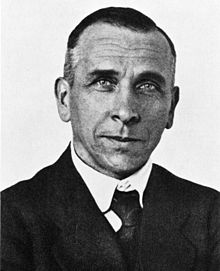
Alfred Lothar Wegener was a German polar researcher, geophysicist and meteorologist. He is the originator of the Continental Drift Hypothesis This is the ideas that the continents are slowly drifting around the Earth.
His hypothesis was very controversial and widely rejected until the 1950s, when numerous discoveries such as palaeomagnetism provided strong evidence of continental drift. This theory became the model for the study of plate tectonics.
Wegener was involved in several expeditions to Greenland to study polar air circulation before the existence of the jet stream was understood.
Expedition participants made many important meteorological (climate) observations. They were the first to overwinter on the inland Greenland ice sheet, and the first to bore ice cores on a moving Arctic glacier.
Tectonic Plates
The Earth’s Crust is broken into large pieces, or Tectonic Plates, that we usually call Continents. They wrap around the entire Earth and fit together like a gigantic jigsaw puzzle. Like most stories in Geology, this one starts beneath the surface.
Due to all the heat and movement below the Earth’s surface, the Tectonic Plates slowly move—usually 3 to 5 centimeters (1.2 to 2 inches) per year. In time, the plates collide, pull apart and slide past each other. Such movement cause most mountain ranges, earthquakes, volcanoes and tsunamis. Over many millions of years, they gradually reshape all the continents.
The Ring of Fire
Most of the action takes place where Tectonic Plates meet. Plates collide, pull apart, or scrape past each other. The Pacific Ocean is encircled by a ring of high volcanic and seismic (earthquake) activity. Most of the active volcanoes on Earth are located here—as well as many important cities!
The Pacific Plate is slowly expanding, and pushes against the North American Plate, Nazca Plate, Eurasian Plate, and others. This causes the edges of the plates to collide, buckle, and compress. This in turn causes earthquakes, volcanoes tsunamis and mountain ranges.
Billion-Year Journey of Earth’s Tectonic Plates
Click on image to view animation.
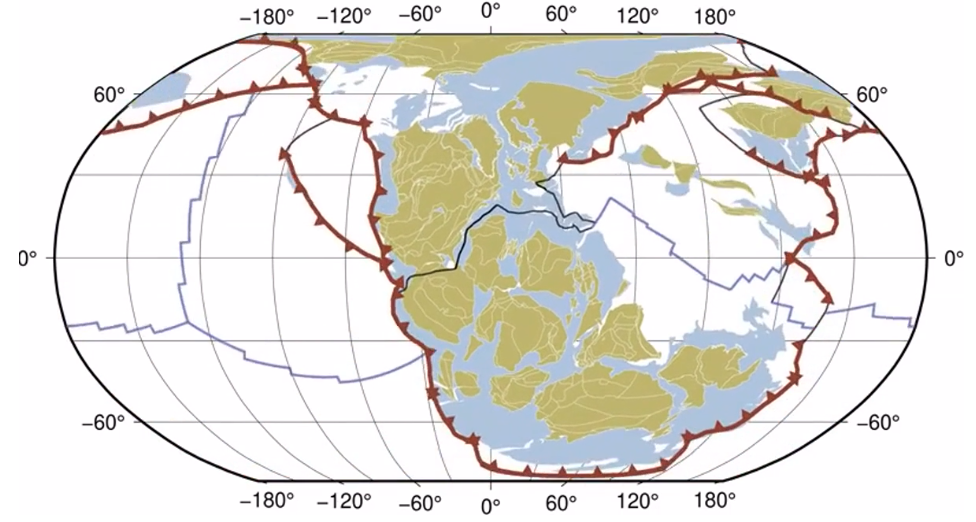
Animation by Merdith et al. 2021, Earth-Science Reviews
Subduction Zone
When a thin, dense oceanic plate collides with a relatively light, thick continental plate, the oceanic plate is forced under the continental plate; this phenomenon is called Subduction. When two oceanic plates collide, one may be pushed under the other and magma from the mantle rises, forming undersea volcanoes.
Earthquakes
All the stress and strain produced by moving plates builds up in the Earth’s rocky crust until it simply can’t take it any more. Suddenly, CRACK!, the rock breaks and the two rocky blocks move in opposite directions along a fracture in the Earth’s surface called a Fault. For example, we live on the San Andreas Fault.
The sudden movement generates an earthquake at a point called the Focus. The energy from the Earthquake spreads out as seismic waves in all directions. The Epicenter of the earthquake is the location where seismic waves reach the surface directly above the focus.



